Arcer National Space Exploration Agency (ANSEA)
 Emblem of the ANSEA | |
 ANSEA Headquarters in Presdale, Arcerion | |
| Agency overview | |
|---|---|
| Formed | 1977 |
| Preceding agency |
|
| Type | Space Exploration, Space Warfare |
| Jurisdiction | Domestic, Foreign |
| Headquarters | ANSEA Building Presdale, Moorden Governorate, Arcerion |
| Motto | "To stars beyond." |
| Employees | 22,550 (2021 estimate) |
| Annual budget | £53 billion (as of 2019[update]) |
| Agency executives |
|
| Parent agency | Arcerion Ministry of Defence |
| Website | Template:Url |
Generic Overview The Arcer National Space Exploration Agency (ANSEA) is a government agency established in 1977 to fund, regulate, and coordinate the space exploration activities of the Cronan nation of Arcerion. The agency cooperates with a number of different international organizations across Ixnay as well as private sector space companies who are active in both aerospace, aeronautical, and space research and technology. The Arcer National Space Exploration Agency is the leading interstellar organization in Crona for Launch Vehicles, utilizing the wide-open swathes of the Arcer Heartland to provide an ideal area for the Northlea Spaceport, the largest interstellar launch, command, and control facility of its type in Crona.
In Arcerion, ANSEA is responsible for publishing a memorandum to the Confederate Parliament on an annual basis and upon its approval, to ensure it is enacted within the confines of the budget and provisions set out by the federal government. ANSEA also has a Budgetary office which works closely with the Treasury Office and Ministry of Finance to regulating bidding on spaceflight projects and capital procurements for spaceflight in Arcerion.
ANSEA's main headquarters is in the Northern Arco city of Presdale, with two smaller stations, the National Arcerion Space Observatory (NASO) in Foxhey Governorate, and the Chester Space Centre in Southern Arcerion, which assists with launch vehicle recovery and some unmanned/manned spaceflight testing. The ANSEA also maintains relay stations in Stenza (STENZ PLS APPROVE BY DELETING THIS), and the Burgundie-held Equitoreal Ostiecia for radio rebroadcast and satellite communications links.
History
Early Arcer Aerospace
Early rocketry in the 1940s and 50s for long range rockets/missiles
Chester Programme
First attempt at unmanned spaceflight into outer space (proto Lion series)
Merging of Military and Civilian Efforts
1976 merger happens
new HQ built and completed by 79
Northlea spaceport established
NASO conglomerated
Physical Infrastructure
ANSEA Headquarters
The ANSEA headquarters building was finished construction and operational by the end of 1979. It comprised all the major department heads as well as every major research, development, procurement, operations, and logistics support for the fledgling agency. As yet unnamed, the Kinnaird Financial Times has speculated that it will likely be dedicated to either Nathan Barnes or Timothy Yves, Arcerion's two most prominent astronauts.
The building itself consists of an atrium and reception hall, a viewing gallery that has line of sight to the Northlea Spaceport, the observation deck which is open to the public on launch days, and four outer 'wings,' labelled A-D. A Wing is comprised of operations and flight staff, and Mission Control is located here, with 24-hour continual support to satellite, manned spaceflight, and launch missions. B Wing is the staff and administrative functions, wherein the Director and Deputy Director reside, as well as Armed Fores liaison officers, and representatives from the Ministry of the Interior and the Ministerial Coordination Element. C Wing is the largest, and is the Reseach, Development, and Manufacturing centre for all Arcer interstellar rocketry and satellite services. A sprawling complex, it is actually several buildings and large manufacturing halls centralized in its own nearby complex, and employs almost half of the total engineers, scientists, academics, military personnel, and supporting staff/bureaucrats that make ANSEA function. D Wing is support and logistical services such as financial support, Human Resources, and has a security team that deals with access to both ANSEA headquarters and Northlea Spaceport.
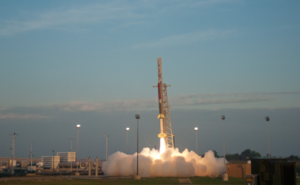
Satellite Transmission Stations (STS)
Arcerion maintains two foreign-based Satellite Stations to assist with maintaining communications links but also dually serving as coordinating elements with other nations' space agencies. The first is STS (South), in Northern Stenza, provides coverage for the Polynesian Sea and the Sea and the Sea of Orixtal, as well as serving as the backup Mission Command Centre for spaceflight missions. The tertiary station, but the largest outstation is located in Burgundie-held Equitoreal Ostiecia, and is primarily staffed and operated by members of the Arcer Air Force and Royal Arcerion Naval Service. STS (East) provides coverage for the Odoneru as well as Northern portions of Sarpedon, assisting with the increased maritime traffic between Arcerion and Burgundie that flows through St. Brendan's Strait.
Northlea Spaceport
The Northlea Spaceport is the largest satellite and rocket-launch facility in Crona, and one of the most modern in Ixnay. It on average has forty launches a year, the most being in 2017 when there was eighty-seven launches, to coincide with the increased need to salvage parts from aging ARTEMIS platforms and repair the existing constellation, to ensure it functioned until the ARTEMIS II-series was launched. The facility has received continuous upgrades and is both used trilaterally, ANSEA using it for civilian space launches and spaceflight, CRONASAT leasing launch pads and supporting facilities for its own launches and maintenance, and the Arcer military using it as a testing ground to launch both Land-Attack Cruise Missiles as well as newer types of Surface-to-Air missiles.
Northlea Spaceport's has two 'Terminals,' those being 'U' Terminal and "M" terminal, respectively meaning unmanned and manned spaceflight. The U-side of the campus is significantly larger due to Arcerion's limited ability to sustain manned spaceflight, with the M side being used infrequently and only when there is assigned FRONTIER missions.
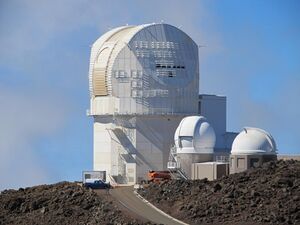
National Arcerion Space Observatory (NASO)
Arcerion's largest public and government-funded space observatory, or deep space telescope, is located on the island governorate of Foxhey. Its primary goal is to look for exoplanets and take deep-space photographs of asteroids, nebulas, and other stars to increase Arcerion's knowledge and scientific research abilities for deep space and areas which are currently not reachable by human spaceflight.
Programmes
Unmanned Exploration
Arcerion maintains a sizeable robotic exploration program, the first large scientific satellite mission for Crona was the Lion I-series of launch vehicles, carrying the first Arcer satellite, Intrepid. It was launched as Arcerion's first unilateral space mission, and was the inaugural launch for the Northlea Spaceport, occurring in 1981. While it was considered unilateral as it was funded and primarily constructed within Arcerion, some Occidental experts were quietly hired by the federal government of Arcerion to provide their expertise. The objective, which was successfully completed, was to conduct weather studies of the storm patterns in the Malentine, Songun, and Polynesian Seas to assist the Royal Arcerion Naval Service planning for future expeditionary operations. The Intrepid is the longest-serving satellite in Ixnay, still beaconing weather recordings as of 2026. In 1989 the first Arcer unmanned vehicle was landed on the Moon as part of the Lion IIa-series launcher program, with Rover 6 sucessfully taking samples and delivering them to an unmanned pod, which returned the samples to Arcerion for study. One of the moon rocks is on display in the Confederate Parliament.
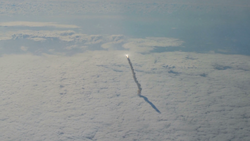
Since 1990, Arcerion has also provided the Lion IIa and Lion III series boosters and launch vehicles (rockets) to lift commercial satellites into orbit. In 2001, Arcerion launched a constellation of military satellites under the ARTEMIS-programme, which aimed to provide increased satellite imagery and spaceborne intelligence collection for the Armed Forces of Arcerion. This constellation would remain in place until 2019, when the first ARTEMIS II-series satellite was launched in cooperation with CRONASAT.
Launch Vehicle Programme (LVP)
Arcerion's Launch Vehicle Program, or LVP comprises one of Ixnay's most advanced rocket propellant and rocket engineering technology centres. It began with the Lion-series rockets (later renamed to Lion I), and over several decadeds matured as changing requirements for satellite lift, manned spaceflight, and orbital delivery influenced the path and overall trajectory of the programme.
The current series of rockets undergoing development, the Lion IVb, are the first reusable rockets designed by Arcerion to be able to serve multiple launches as a cost-efficiency initiative as well as part of growing calls for the environmental impacts of space travel. Arcerion currently is expected to field a fleet of roughly fifteen Lion IVb rockets and their associated booster and supporting equipment, to agument the current fleet of several dozen older Lion IIIb and Lion IIIg series rockets.
Ixnay Observation
Arcerion maintains two constellations over Crona and Ixnay, the ARTEMIS I (and partially II) series, as well as the GLOBE-series. The ARTEMIS series is a constellation comprised of six satellites, mostly centering on the Southwetsern and Southeastern Cronan Pensinsulas, and the Polynesian Sea. The primary purpose is the gathering of military intelligence, although through the Arcer National Security Enterprise, sharing agreements and shared use of the ARTEMIS-programme permit other agencies such as the Office of Public Safety and National Security to utilise the satellites for their own requirements. The GLOBE-series of satellites primarily functions as an oceanographic, weather monitoring, and civilian satellite television broadacast service, assisting with communications in rural Arcerion as well as providing the commercial backbone for maritime satellite radios. The GLOBE-series is licensed for use by commercial satellite communications companies and GPS-providers, allowing civilians access to better navigational aids and having the ability to have internet and voice connections in remote areas. The GLOBE series also provides much of the communications infrastructure for the remote Arctic Howland Governorate.
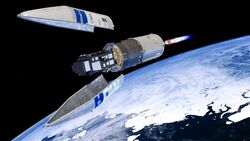
Collaboration with CRONASAT
CRONASAT remains the largest commercial satellite company in Arcerion, and one of the largest in the world. It provides full-spectrum communications and commercial imagery support and is one of the leader research and tech innovators in Ixnay. CRONASAT has consistently collaborated with the ANSEA for booster lift of their satellites, as well as maintenance by Arcer Astronauts. CRONASAT is a regular bidder on large government space and aerospace contracts, assisting with its large market cap in the aeronatics market for Ixnay.
Manned spaceflight
Arcerion's first citizen in space was Flight Lieutenant Nathan Barnes, from Dalfearn, Arcerion. He conducted a short spaceflight onboard a modified Lion I-series rocket in 1980, staying in Ixnay's Thermosphere for seventy-three minutes before re-entry and being recovered in the Songun Sea by the ACS Kurst aircraft carrier. To date, ninety eight Arcer citizens have conducted manned missions into space, with 110 having been qualified but did not partake in spaceflight due to either medical or operational reasons. With the launch of the ARTEMIS-series of satellites in 2001, the Annual Arcer Space Memorandum, manned spaceflight became a national priority for sustained missions.
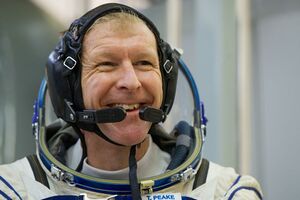
The FRONTIER space station was Arcerion's first attempt at sustained human spaceflight. While previously there had been temporary missions, such as circumnavigation or the Moon, or orbiting Ixnay for 72-96 hours at a time, there had been no attempt to create the sustained infrastructure for human survival habitats in orbit. FRONTIER's launch and construction changed this, and from 2002 to 2005 seven different segments, maintenance modules, crew berths, and EVA (extra vehicular activity). The FRONTIER station has been in continuous operation since 2005, but has not been consistently manned since becoming operational. It can support a crew of three for sixty days, or its maximum of five crew for up to a 30-day period. During this time, Flight Leads are always senior or experienced astronauts with previous FRONTIER-experience, with their second-in-command usually being an engineer. To date, three other nations in Ixnay have sent astronauts on a semi-regular basis to participate in Arcer-led spaceflights, being County XX, Nation YY, and State ZZ. The record for time on the Frontier is Wing Commander Timothy Yves, a resident of Easthampton, Arcerion. Wg Cdr Yves has spent seven missions on the FRONTIER, with five of them being as Flight Lead, for a total of 244 days in orbit around the Ixnay. Despite this accomplishment, no Arcer astronaut has ever conducted a lunar surface landing, although discussions as recent as the 2022 Annual Arcer Space Memorandum mention specifically the effort to created a manned mission to the Moon.
Arcer Astronauts
- Flight Lieutenant Nathan Barnes, first Arcer Astronaut in Space
- Flight Lieutenant Ethan Hawkeswill, first Arcer Astronaut to circumnavigate the Moon
- Group Captain John Farthing, first Arcer Astronaut to circumnavigate Ixnay
- Flying Officer Craig Bax, first Arcer Astronaut to conduct a 'spacewalk' (EVA)
- Wing Commander Timothy Yves, most time spent in Orbit around Ixnay (244 days, 7 missions)
- Squadron Leader Ryan Allen, most spacewalks by an Arcer Astronaut (Fifteen over three missions)
Space Warfighting
Arcerion's role in space mostly relates to the collection of military intelligence. While there have been provisions and forums on how to effectively conduct ASAT (Anti-Satellite) missions, there is presently no capability that can support this warfighting function. Space Flights involving the military (excluding military service members employed as astronauts) are usually controlled through the Aerospace Coordination Cell (ACC) which is housed under the Arcer Air Force Headquarters. The ACC also controls satellite and constellation placement, movement, and collection activities, serving in a double capacity as a staff and operations cell but also as an intelligence and collection unit.
International Partnerships